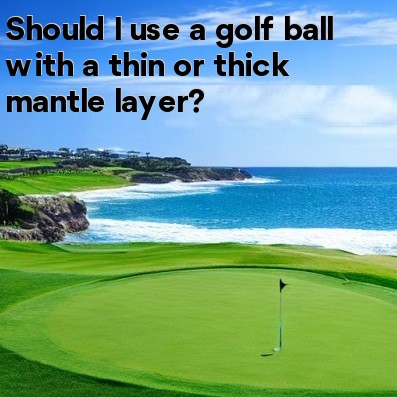
Golf Ball Mantle Layer: Thin or Thick?
When it comes to golf balls, there are numerous factors to consider when deciding which one is best for your game. One such factor is the mantle layer of the golf ball. The mantle layer is a crucial component that plays a significant role in determining the ball's performance in flight and around the greens. But should you opt for a golf ball with a thin mantle layer or a thick one? Let's examine both options.
Thin Mantle Layer
Golf balls with a thin mantle layer are often preferred by golfers who prioritize distance off the tee. The thinner mantle allows for a higher initial velocity, resulting in greater ball speed and increased carry distance. The reduced weight in the mantle also lowers the spin rate, which can be beneficial for keeping the ball straighter and minimizing hooks and slices.
Furthermore, a thin mantle layer promotes a softer feel off the clubface, enhancing the golfer's sense of control and feedback. It allows for a more responsive and precise touch, particularly when playing shots around the green. Golfers who rely on finesse shots and accurate short game performance may find a thinner mantle layer to be advantageous.
Thick Mantle Layer
In contrast, golf balls with a thick mantle layer are designed to offer enhanced control and spin, particularly for approach shots and shots around the green. The additional layer provides increased stability and a higher moment of inertia, resulting in more control over the ball's flight and trajectory.
Golfers who prioritize control and shot-shaping capabilities may find a thick mantle layer to be more suitable for their game. The extra spin generated by the thicker mantle can help the ball hold the green better, allowing for more predictable stops and better distance control on approach shots. Additionally, golfers who struggle with generating enough spin on their shots may benefit from using a ball with a thicker mantle layer.
Considerations
Ultimately, the choice between a thin or thick mantle layer depends on your specific needs and playing style. If distance and a softer feel are your top priorities, a ball with a thin mantle layer might be your best option. However, if control, spin, and shot-shaping are more important to you, a ball with a thicker mantle layer may be preferable.
It's crucial to note that the mantle layer is just one factor among many that contribute to a golf ball's overall performance. Each golfer is unique, and various variables such as swing speed, skill level, and personal preferences should also be considered when selecting a golf ball.
Ultimately, the best approach is to try out different golf balls with varying mantle layers and see which one suits your game the best. Experimentation and observation of the ball's performance on the course can provide valuable insights into your ideal golf ball choice.
In conclusion, there is no definitive answer to whether a thin or thick mantle layer is superior in golf balls. Understanding the characteristics and advantages of each option can help you make an informed decision that aligns with your individual playing style and objectives.





